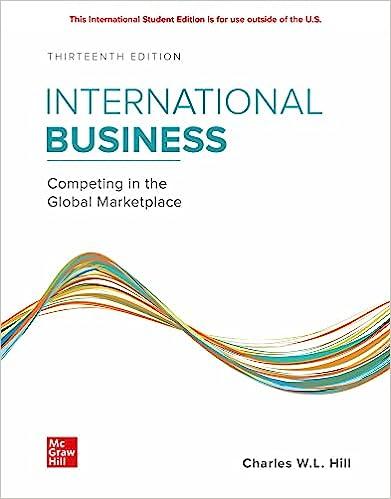Sony Corporation (sony.com) is one of the most well-known companies in the world. With a heritage from
Question:
Strategically, Sony’s products and services can be classified into 12 core business segments: TV and video, audio, digital camera, professional products and solutions, medical, semiconductors, smartphones and internet, game and network services, pictures, music, and financial services. To integrate these 12 segments, Sony has a vision of “using our unlimited passion for technology, content, and services to deliver groundbreaking new excitement and entertainment.”
The mission is even clearer. Sony is “a company that inspires and fulfills your curiosity.” But is that mission too broad to signal to the marketplace and global customers what the company can do for them?

For the company, this strategic curiosity, innovativeness, and passion for technology have served Sony well as a global innovation leader for more than seven decades. Most customers expect Sony to offer cutting-edge products—at least at or near the top of the innovation scale—and manufacture high-quality goods that are priced at a fair level. For example, Sony launched the world’s first direct-view portable transistor TV in 1960, and the company developed the world’s first transistor-based videotape recorder in 1961. The strategy for the future is through what Sony sees as the stunning reality of visuals that can be created by big-screen TVs and dynamic sound. Sony plans to transform the viewing experience from “watching” to “feeling.”
Behind the scenes, Sony has also spent more than 50 years honing its technological excellence in the field of broadcasting and in professional products. The company’s products are widely used in the production of movies and television shows, as well as in live sporting events. This has resulted in a high global market share for Sony in the business-to-business arena as well as the company receiving a number of Emmy Awards. Moving forward, Sony is placing a strategic emphasis on providing new value through end-to-end solutions that meet the needs of various customers by incorporating technologies enhanced in the area of content creation. One can wonder, though, will Sony’s future depend on end-customers at the people level or its B2B customers (e.g., movie and TV production companies)?
Beyond the 12 core segments that have served Sony well strategically for decades, the company is embarking on global initiatives to create new business opportunities. They are accelerating R&D to bring about innovations that can, if successful, become new strategic business segments serving customers’ needs and wants. To strategically evaluate and nurture potential opportunities, Sony divides these into new business ventures (Life Space UX, Seed Acceleration Program, and Sports Entertainment) and R&D opportunities (Future Lab Program and Sony Computer Science Laboratories Inc.). Through these ventures, the regular, individual customer is front and center, meaning Sony places its focus on its traditional customer base.
Questions
1. Do you see Sony as an innovator in its industries of electronics, semiconductors, computers, video games, and telecommunications equipment? Why or why not?
2. Sony has a vision of “using our unlimited passion for technology, content, and services to deliver groundbreaking new excitement and entertainment.” The mission is even clearer. Sony is “a company that inspires and fulfills your curiosity.” Does Sony inspire and fulfill your curiosity? Why or why not?
3. Sony has 12 core segments in its business. Is this too many or not enough? Are today’s companies diversified like they used to be a few decades ago? Can Sony’s 12-segment business model be sustainable?
4. The Future Lab Program, which is part of Sony’s investment in R&D, embraces an approach to technological R&D that emphasizes an open creative environment and direct lines of communication with society, with the end goal being to co-create new lifestyles and customer value. Does Sony create significant customer value? Do you think Sony creates new lifestyles?
Step by Step Answer:

ISE International Business Competing In The Global Marketplace
ISBN: 9781260575866
13th International Edition
Authors: Charles Hill





